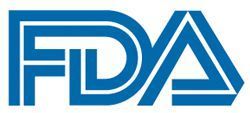Article
FDA Grants Fast Track Status to Paxalisib for Glioblastoma
Author(s):
The FDA has granted a fast track designation to paxalisib for the treatment of patients with glioblastoma.

The FDA has granted a fast track designation to paxalisib (formerly GDC-0084) for the treatment of patients with glioblastoma, according to an announcement from Kazia Therapeutics Limited, the developer of the drug.1
The indication is specifically for the treatment of patients with newly diagnosed glioblastoma with unmethylated O6-Methylguaninemethyltransferase (MGMT) promotor status who have finished initial radiation with concomitant temozolomide.
“In awarding fast track designation to paxalisib, [the] FDA has recognized the drug’s potential to meaningfully improve outcomes for patients with glioblastoma; this is a very power acknowledgement,” James Garnder, MD, MBA, CEO of Kazia Therapeutics Limited, stated in a press release. “The opportunities that fast track designation creates, as we move toward an new drug application (NDA) filing, are of great value and have the potential to substantially accelerate the commercialization of paxalisib.”
Interim data from an ongoing phase 2 trial (NCT03522298) examining the investigational small molecule inhibitor of the PI3K/mTOR pathway in a total of 30 patients with glioblastoma were presented during the Virtual Scientific Program and showed a median progression-free survival (PFS) of 8.5 months.2 Moreover, the overall survival (OS) was 17.7 months with paxalisib in this population.
The data with paxalisib compare favorably with the current standard of care, which is temozolomide (Temodar), according to Kazia Therapeutics Limited. The PFS benefit observed with the chemotherapy is just 5.3 months, while the OS is 12.7 months.
In the open-label, multicenter, dose-escalation and -expansion phase 2 trial, investigators set out to examine the safety and tolerability, pharmacokinetics, and clinical activity of paxalisib in patients with newly diagnosed glioblastoma with unmethylated MGMT promotor status as adjuvant treatment after surgical resection and initial chemoradiation with temozolomide. Another objective of the trial was to establish the recommended phase 2 dose of the agent.
The trial had a 2-part design. In the first portion, investigators used a standard 3 + 3 design to establish the maximum-tolerated dose (MTD) of paxalisib.3 The agent was initially given at a dose of 60 mg based on phase 1 data and dose levels increased in 15-mg steps. For the dose-escalation portion of the research, investigators assessed the safety, tolerability, and pharmacokinetics of the drug given orally in 28-day treatment cycles.
Following the identification of the MTD, patients continued to receive their protocol-assigned dose levels of paxalisib until disease progression or intolerable toxicity, whichever occurred first.
In the expansion phase of the research, patients were evaluated in a 2-arm, randomized, open-label trial to further understand the safety, tolerability, and pharmacokinetics of the drug and to garner insight into the activity of the agent as a monotherapy in this patient population.
To be eligible for enrollment, patients had to be 18 years of age or older, have a life expectancy of over 12 weeks, have histologically confirmed intracranial unmethylated MGMT promotor status glioblastoma, have undergone maximal surgical resection of their tumor and within 6 weeks of surgery received radiation treatment in conjunction with temozolomide, among others.
If patients received prior radiotherapy to the brain or other cytotoxic therapy in addition to the required postoperative radiation plus temozolomide, or any other investigational therapy directed against the tumor, they were not permitted to participate. Patients who received any previous or had any anticipated concomitant treatment involving a medical device applying tumor treating fields, those with undetermined/indeterminate MGMT status, and those who were diabetic or pre-diabetic, among others, were considered ineligible to enroll.
Overall, a total of 30 patients were enrolled on the trial; 9 patients were included in the dose-escalation cohort and an additional 21 were included in the second portion of the research.4 Previous results showed that in the 9-patient subgroup, the median OS with paxalisib was 17.7 months. In the group of 30 patients, the median PFS was 8.5 months.
Regarding safety, no major toxicities were reported. Hyperglycemia, oral mucositis, and low-grade rash were among the most frequently reported adverse effects that were determined to be associated with the study treatment.
“The ‘rolling review’ process enables Kazia to complete and submit substantial sections of our NDA filing in advance, saving time and reducing risk for the product,” Garner added in the release. “We look forward to working closely with the FDA as we move into the final stage of development for paxalisib.”
In August 2020, the agent was granted a fast track designation by the FDA. Further data are expected in the second half of 2020, with completion expected in early 2021. The agent has been selected to be examined in the international GBM AGILE study that is being done in patients with glioblastoma and investigators expect to start recruiting patients in the second half of 2020.
References
- US FDA awards fast track designation (FTD) to paxalisib for glioblastoma. News release. Kazia Therapeutics Limited. August 20, 2020. Accessed August 20, 2020.
- Kazia presents further paxalisib and cantrixil data at AACR, reinforcing positive efficacy signals for both drugs. News release. Kazia Therapeutics Limited. June 22, 2020. Accessed August 20, 2020. https://prn.to/3hgbCLM.
- Safety, pharmacokinetics and efficacy of paxalisib (GDC-0084) in newly-diagnosed glioblastoma. ClinicalTrials.gov. Updated June 9, 2020. Accessed August 20, 2020. https://clinicaltrials.gov/ct2/show/NCT03522298.
- Kazia's paxalisib shows positive overall survival signal in phase II glioblastoma study. News release. Kazia Therapeutics Limited.April 7, 2020. Accessed August 20, 2020. https://yhoo.it/2JP8QOA.








